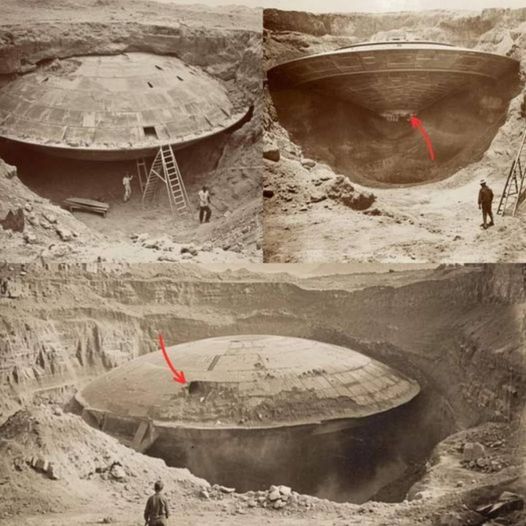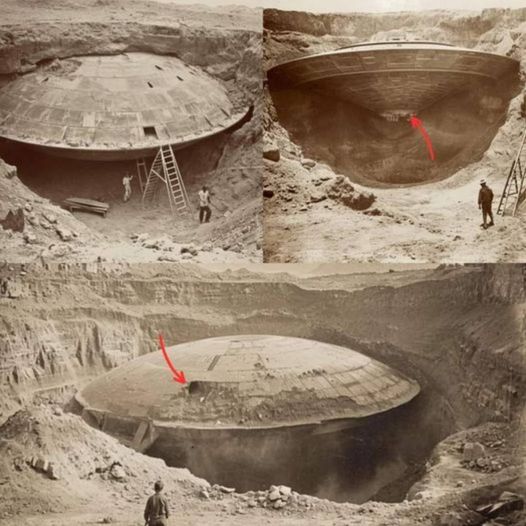The vast and enigmatic deserts of the world have long been a source of fascination, offering glimpses into ancient civilizations, hidden treasures, and natural wonders that defy explanation. These arid landscapes, often harsh and inhospitable, have yielded some of the most remarkable discoveries in history. From ancient artifacts to unexplained phenomena, here are 10 incredible discoveries made in the remote desert.

### 1. The Lost City of Ubar
Often referred to as the “Atlantis of the Sands,” the lost city of Ubar was a legendary Arabian city said to have been buried beneath the sands of the Rub’ al Khali desert, also known as the Empty Quarter. In the early 1990s, a team of explorers and archaeologists used satellite imagery to locate what they believed to be Ubar’s remains. The site, known as Shisr, revealed a complex of ancient ruins, including a fortress and a network of underground water channels, suggesting a once-thriving city that was eventually swallowed by the desert.
### 2. The Mysterious Nazca Lines
The Nazca Desert in southern Peru is home to one of the world’s most mysterious archaeological wonders: the Nazca Lines. These massive geoglyphs, which include shapes of animals, plants, and geometric patterns, were created by the Nazca culture between 500 BCE and 500 CE. The purpose of these intricate designs, some stretching over hundreds of meters, remains a mystery. Theories range from astronomical calendars to religious rituals, but their exact significance continues to elude researchers.
### 3. The Antikythera Mechanism
Although not discovered in a desert, the Antikythera Mechanism, often called the world’s first computer, was found in a shipwreck off the coast of a small Greek island. However, its origin has ties to the arid regions of the Middle East. This ancient Greek device, dating back to the first century BCE, was used to predict astronomical positions and eclipses. The mechanism’s advanced engineering suggests that it may have been influenced by knowledge from ancient Mesopotamian and Egyptian cultures, both of which thrived in desert regions.
### 4. The Desert Kites
In the deserts of the Middle East and Central Asia, researchers have discovered a series of ancient stone structures known as “desert kites.” These structures, dating back thousands of years, were used as large-scale traps for hunting wild animals, such as gazelles. The kites consist of long stone walls converging into a funnel-shaped enclosure, where animals would be driven and then captured or killed. The sheer size and complexity of these structures indicate that ancient peoples in these regions had a sophisticated understanding of hunting techniques.
### 5. The Fossilized Remains of Ancient Whales
In the Atacama Desert of Chile, one of the driest places on Earth, paleontologists made a remarkable discovery: a massive graveyard of ancient whale fossils. The site, known as Cerro Ballena, contains the remains of at least 40 prehistoric whales, some dating back over 5 million years. The fossilized skeletons are so well-preserved that scientists have been able to gain insights into the evolution of marine life and the environmental changes that occurred during that period.
### 6. The Valley of the Golden Mummies
In 1996, archaeologists in Egypt’s Bahariya Oasis made a stunning discovery: a vast burial ground containing the remains of over 250 mummies, many of which were adorned with gold masks and jewelry. Known as the Valley of the Golden Mummies, this site dates back to the Greco-Roman period and provides a unique glimpse into the burial practices and beliefs of ancient Egyptians during that era. The mummies are remarkably well-preserved, and the discovery has led to significant advancements in our understanding of Egyptian funerary traditions.
### 7. The Ancient City of Petra
Hidden in the deserts of southern Jordan, the ancient city of Petra is one of the most spectacular archaeological sites in the world. Carved directly into the rose-red cliffs, Petra was the capital of the Nabataean Kingdom and a major trading hub around the 6th century BCE. Rediscovered by Western explorers in the early 19th century, Petra’s intricate rock-cut architecture, including the iconic Treasury and Monastery, has earned it a place as one of the New Seven Wonders of the World. The city’s advanced water management systems and complex architecture continue to amaze archaeologists.
### 8. The White Desert’s Mushroom Formations
Egypt’s White Desert, located in the Farafra Depression, is famous for its otherworldly landscapes, dominated by bizarre, mushroom-shaped rock formations. These chalky structures, sculpted by wind erosion over millennia, create a surreal environment that looks more like the surface of an alien planet than a desert on Earth. While not a man-made discovery, the White Desert’s formations are a natural wonder that has captured the imagination of travelers and geologists alike.
### 9. The Hidden Caves of the Dead Sea Scrolls
In the Judean Desert near the Dead Sea, a series of caves have yielded one of the most significant archaeological finds of the 20th century: the Dead Sea Scrolls. Discovered in the 1940s and 1950s, these ancient manuscripts date back to the 3rd century BCE and include some of the oldest known copies of Biblical texts. The scrolls, which were hidden in the caves by a Jewish sect known as the Essenes, provide invaluable insights into the religious practices and beliefs of the time and have had a profound impact on our understanding of early Judaism and Christianity.
### 10. The Enigmatic Desert Glass of the Sahara
In the Sahara Desert, particularly in the area known as the Great Sand Sea, explorers have found a mysterious natural phenomenon: Libyan Desert Glass. This translucent, yellow-green glass, scattered across the desert, is believed to have formed over 26 million years ago, possibly as a result of a meteorite impact or an atmospheric explosion. The glass was highly prized by ancient Egyptians, who used it to craft jewelry, including a scarab found in Tutankhamun’s tomb. The exact origins of the desert glass remain a subject of scientific investigation, adding to its allure.
### The Desert’s Hidden Treasures
The remote deserts of the world are often seen as barren and lifeless, but these incredible discoveries prove that these harsh landscapes are teeming with history, mystery, and natural wonders. From ancient cities and burial grounds to unexplained phenomena and geological marvels, the desert continues to reveal its secrets to those who dare to explore its vast expanses. As technology and exploration methods advance, who knows what other incredible discoveries await us in the world’s most remote deserts? The quest for knowledge and understanding drives us forward, urging us to uncover the hidden treasures of these arid lands.

